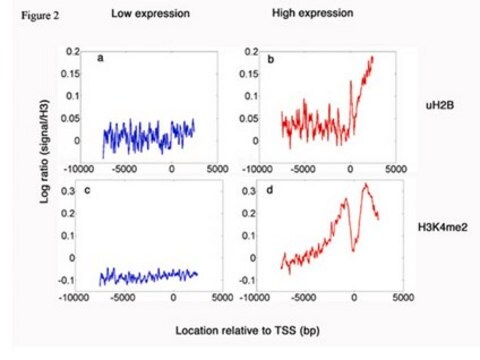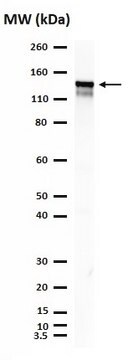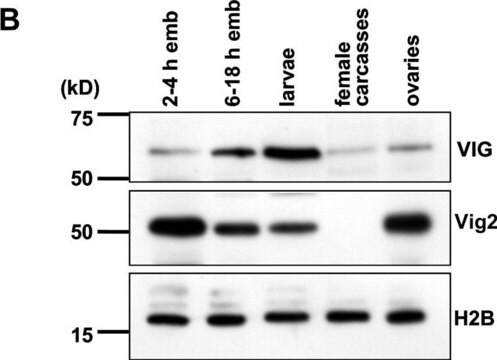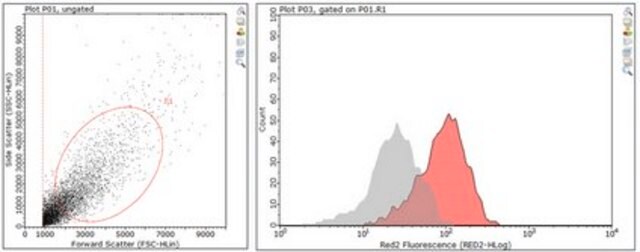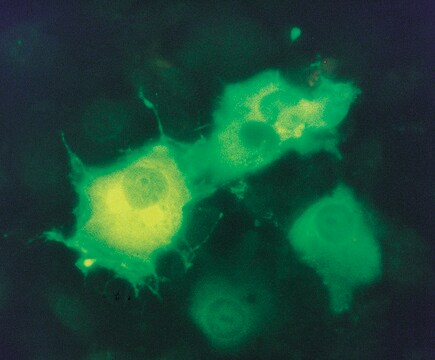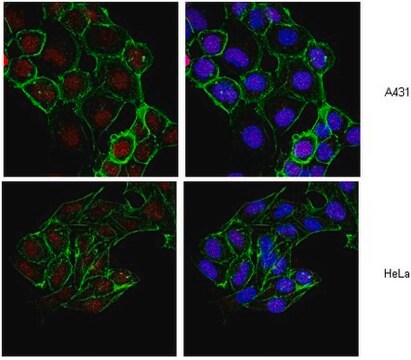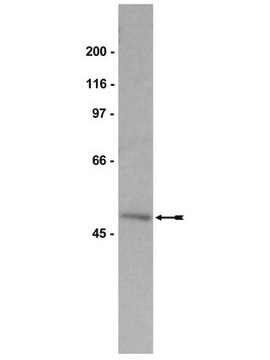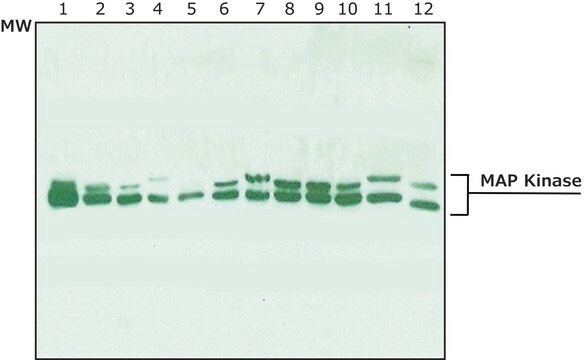17-650
ChIPAb+ Ubiquityl-Histone H2B - ChIP Validated Antibody and Primer Set
clone 56, from mouse, purified by using protein G
Sinônimo(s):
H2BUb, Histone H2B (ubiquityl), H2B histone family, member L, H2B.1 A, histone 1, H2bc, histone cluster 1, H2bc
About This Item
Produtos recomendados
fonte biológica
mouse
Nível de qualidade
clone
56, monoclonal
purificado por
using protein G
reatividade de espécies
mouse, rat, vertebrates, human, plant
fabricante/nome comercial
ChIPAb+
Upstate®
técnica(s)
ChIP: suitable
immunofluorescence: suitable
immunoprecipitation (IP): suitable
western blot: suitable
Isotipo
IgG2aκ
nº de adesão NCBI
nº de adesão UniProt
Condições de expedição
dry ice
Descrição geral
The ChIPAb+ Ubiquityl-Histone H2B, (clone 56) set includes the Ubiquityl-Histone H2B, (clone 56) antibody, a negative control antibody (purified Mouse IgG), and qPCR primers which amplify a 213 bp region within the coding region of the human GAPDH gene.
The ubiquityl-Histone H2B and negative control antibodies are supplied in a scalable "per ChIP" reaction size and can be used to functionally validate the precipitation of Ubiquityl-Histone H2B associated chromatin.
Especificidade
Imunogênio
Aplicação
Sonicated chromatin prepared from HeLa S3 cells (1 X 106 cell equivalents per IP) was subjected to chromatin immunoprecipitation using 1 μg of either a normal mouse IgG or Anti-Ubiquityl-Histone H2B antibody and the Magna ChIP G Kit (Cat. # 17-611).
Successful immunoprecipitation of ubiquityl-Histone H2B associated DNA fragments was verified by qPCR using GAPDH promoter (negative) and GAPDH coding (positive) Primers (Please see figures). Data is presented as percent input of each IP sample relative to input chromatin for each amplicon and ChIP sample as indicated.
Please refer to the EZ-Magna G ChIP (Cat. # 17-409) or EZ-ChIP (Cat. # 17-371) protocol for experimental details.
Western Blot Analysis:
HeLa cell lysate was resolved by electrophoresis, transferred to PVDF and probed with anti-Ubiquityl-histone H2B at a dilution of 1:4000 (Please see figures).
Epigenetics & Nuclear Function
Chromatin Biology
Histones
Embalagem
Qualidade
Sonicated chromatin prepared from HeLa S3 cells (1X 106 cell equivalents per IP) were subjected to chromatin immuno-precipitation using 1 µg of either a normal mouse IgG or Anti-ubiquityl-Histone H2B, clone 56 antibody and the Magna ChIP® G Kit (Cat. # 17-611). Successful immunoprecipitation of ubiquityl-Histone H2B-associated DNA fragments was verified by qPCR using Control Primers.
Please refer to the EZ-Magna ChIP G (Cat. # 17-409) or EZ-ChIP (Cat. # 17-371) protocol for experimental details.
Descrição-alvo
forma física
Normal Mouse IgG. One vial containing 25 μg purified mouse IgG in 25 μL storage buffer containing 0.1% sodium azide. Store at -20°C.
ChIP Primers GAPDH Coding Region. One vial containing 75 μL of 5 μM of each primer specific for the coding region of human GAPDH. Store at -20°C.
FOR: GGC TCC CAC CTT TCT CAT CC
REV: GGC CAT CCA CAG TCT TCT GG
Armazenamento e estabilidade
Nota de análise
Includes negative control mouse IgG antibody and primers specific for human GAPDH coding region.
Informações legais
Exoneração de responsabilidade
Código de classe de armazenamento
10 - Combustible liquids
Certificados de análise (COA)
Busque Certificados de análise (COA) digitando o Número do Lote do produto. Os números de lote e remessa podem ser encontrados no rótulo de um produto após a palavra “Lot” ou “Batch”.
Já possui este produto?
Encontre a documentação dos produtos que você adquiriu recentemente na biblioteca de documentos.
Nossa equipe de cientistas tem experiência em todas as áreas de pesquisa, incluindo Life Sciences, ciência de materiais, síntese química, cromatografia, química analítica e muitas outras.
Entre em contato com a assistência técnica